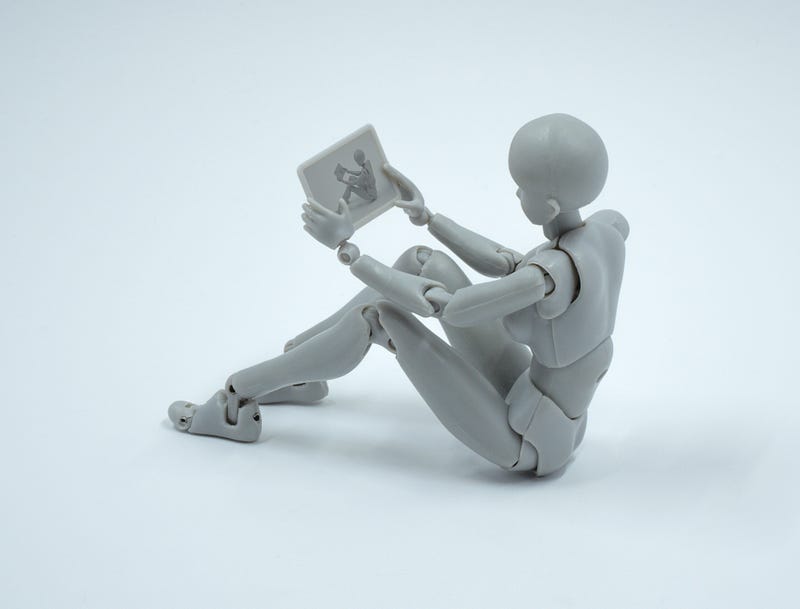Exploring the Possibility of Uploading Human Consciousness
Written on
Chapter 1: The Concept of Transhumanism
Transhumanism is a philosophical movement advocating for the enhancement of human capabilities through science and technology. The concept can be traced back to J.B.S. Haldane’s 1923 essay, "Daedalus: Science and the Future," where he explored genetic modifications aimed at improving human existence.
As we advance technologically, the aspiration has expanded to encompass the possibility of human immortality. But how do we plan to achieve this? One intriguing notion gaining popularity is mind uploading—transferring the human brain's contents, including consciousness, to a computer.
Before dismissing this as mere fantasy, it’s important to examine the current state of mind uploading initiatives.
Chapter 2: The Current Landscape of Mind Uploading
Each year, substantial investments flow into various life-extension projects, with a portion allocated to mind uploading endeavors. High-profile companies like Neuralink are working on brain-computer interfaces. While their initial focus is on medical applications, founder Elon Musk has hinted at a future where human and machine merge.
Another ambitious project is the 2045 Initiative, funded by Russian billionaire Dmitry Iskov, which aims to facilitate mind uploading and ultimately replace human bodies with robotic avatars by 2045.
Section 2.1: Understanding Mind Uploading
To embark on the journey of mind uploading, we first need to clarify what we mean by "the mind." It encompasses the combined attributes of human consciousness and intellect. Mind uploading involves creating a digital replica of this internal realm.
Successful mind uploading equates to achieving functional immortality, as one would continue to exist as long as the digital copy is preserved.
Section 2.2: Key Assumptions of Mind Uploading
The feasibility of mind uploading rests on three primary assumptions:
- Physicalism
This notion posits that the human mind resides within the brain's architecture and electrochemical processes. Essentially, everything that constitutes the mind is found in the brain, which acts as the central processor.
- Scannability
This assumption suggests that we will eventually acquire the knowledge and technology to digitally replicate the brain. The process of scanning the mind is the first step toward understanding how to duplicate it.
- Computability
This theory asserts that the mind can be hosted by computer software. Recent advancements in artificial neural networks that emulate human brain functions bolster the belief that scientists can reverse-engineer the brain.
These concepts are hotly debated among scientists and philosophers alike.
Section 2.3: Mapping the Human Brain
Understanding how the brain operates is crucial to progressing toward mind uploading. The human brain, with its approximately 80–100 billion neurons, communicates through countless connections, transmitting thousands of signals continuously.
To facilitate the transition of this intricate network into a digital format, scientists aim to map the human brain—creating a "connectome." This comprehensive catalog details all brain structures and their interconnections.
The Human Connectome Project, established in 2014, is racing to map the brain's connectome. In 2016, they published a detailed map of the cerebral cortex, identifying 97 regions and confirming 83 others.
While research on human connectomes is still in its infancy, scientists have successfully mapped less complex organisms, such as the nematode C. Elegans, which features 302 neurons and 7,000 connections.
Mapping a human brain, with its vast complexity, will necessitate a significant leap in scanning technology. Scientists are currently studying smaller samples, akin to a grain of sand, containing about 100,000 neurons and a billion connections to refine their methods before scaling up.
Section 2.4: Simulating the Human Brain
Ongoing research in artificial intelligence leads scientists to believe in the possibility of simulating the human mind. With the right components, it is envisioned that artificial neural networks could fully mimic their biological counterparts.
Yet, a significant barrier remains in terms of computer processing power and storage capabilities. Although artificial neural networks currently power many technologies, no one has yet developed a system equivalent to 86 billion neurons.
Nevertheless, advancements in computer technology are anticipated to enable the management of such extensive datasets long before we successfully map the human brain.
Chapter 3: The Challenge of Human Consciousness
The most daunting aspect of this endeavor is understanding human consciousness. This topic is more philosophical than scientific. While we define the mind to include consciousness, many argue it may exist independently.
Futurist Michio Kaku characterized consciousness as “what it feels like to experience the world rather than merely interacting with it.” Though we have a profound familiarity with consciousness, it remains one of the most elusive concepts to explain.
According to David Chalmers, a prominent philosopher, consciousness represents a "hard problem"—a phenomenon that eludes our current scientific understanding. Chalmers suggests that such problems cannot be simplified within our existing frameworks.
Some theorists propose exploring consciousness through the lens of quantum physics, with Roger Penrose's theory of orchestrated objective reduction offering a potential explanation. This approach seeks to ground consciousness in the realm of physics and mathematics, facilitating its encoding.
However, our grasp of quantum physics is also limited. Are we attempting to clarify one complex issue using another that we don't fully comprehend? It's a perplexing dilemma.
In summary, the journey to uploading human consciousness hinges on technological advancements in mapping and simulating the brain. Yet, the nature of consciousness itself appears to be far more intricate than we can imagine.
While I remain skeptical about our ability to break down consciousness through improved scanning methods, it's essential to continue exploring this frontier. Even if we compile a list of necessary components for mind uploading, we might still struggle to capture the essence of consciousness.
Ultimately, pursuing this agenda holds promise, as it may lead to significant insights about ourselves and spur technological advancements along the way.
